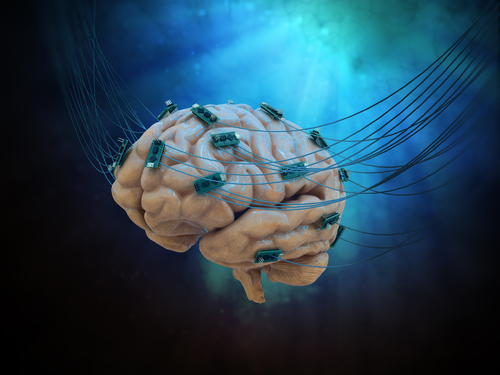Deep Brain Stimulation Not Linked to Greater Risk of Dementia for Parkinson’s Patients, Study Concludes

Long-term deep brain stimulation (DBS) is cognitively safe and does not increase the risk for dementia in people with Parkinson’s disease, according to the results of a 10-year follow up study.
However, being male, older, having hallucinations, scoring low on cognitive tests, and perioperative cerebral hemorrhage (bleeding in the brain that occurs during or after surgery) were identified as risk factors for developing dementia in Parkinson’s patients with longstanding DBS.
“These results are very encouraging for people with Parkinson’s and their families that they can take advantage of the benefits of deep brain stimulation without worrying about it increasing the likelihood of developing dementia,” Elena Moro, MD, the study’s lead author, said in a press release.
The study, “Dementia and subthalamic deep brain stimulation in Parkinson disease,” was published in the journal Neurology.
DBS is an invasive treatment option for patients with advanced Parkinson’s disease who do not respond well to conventional medication.
The technique involves implanting electrodes into specific areas of the brain to deliver electrical signals to ease motor symptoms. The amount of stimulation is controlled by a pacemaker-like device placed under the skin, normally at the upper chest.
For advanced Parkinson’s cases, DBS outperforms other therapeutic strategies, but it is not currently recommended for patients with moderate or severe cognitive impairment or dementia due to fears it will worsen a patient’s cognitive skills.
Data on this matter, however, is controversial, with some studies suggesting a negative impact of DBS on cognition, whereas other studies have reported the therapy has beneficial effects.
It remains unknown whether these different results are potentially linked to specific risk factors that may increase the risk of dementia after DBS for certain Parkinson’s patients.
Now, researchers at the Grenoble Alpes University, France, and colleagues performed a retrospective analysis of 175 Parkinson’s patients who underwent bilateral (both sides) subthalamic nucleus DBS (STN-DBS), between 1993 and 2007. The subthalamic nucleus is a part of the brain that is involved in motor and cognitive functions.
The team evaluated the incidence of dementia after DBS after one year (short-term), five years (medium-term) and 10 years (long-term). The presence of dementia was evaluated according to the Diagnostic Criteria for Dementia (DSM-V13) at each follow-up after DBS surgery.
Researchers also evaluated potential risk factors for postoperative dementia.
Of the 175 patients included in the analysis, all were evaluated one year after DBS, 142 (81.2%) after five-years, and 104 (59.4%) after 10 years. Fifty patients (28.6%) were lost after the 10 years of follow-up and 21 (12%) died.
At one-year follow-up, four out of the 175 patients developed dementia. This number increased to 12 after five years, and at 10 years, 31 of 104 patients had dementia. Overall, this corresponded to a prevalence of 2.3% at one year, 8.5% at five years, and 29.8% at 10 years.
After a median follow-up of six years, and when including patients lost to follow-up and those who died, the incidence of dementia was 2.3% (at one year), 10.9% ( five years) and 25.7% (10 years).
“These rates are not higher than those reported in the general population of people with Parkinson’s,” said Moro, who also is a fellow of the American Academy of Neurology. “The few studies that are available with similar disease duration have reported higher rates of dementia. Other studies of people with Parkinson’s who are taking medication for their symptoms show an incidence rate for dementia that varies from 50 to 100 per 1,000 person-years,” she said.
When comparing patients with and without dementia after 10 years of follow-up, researchers identified that being male, older, having hallucinations, lower cognitive scores prior to surgery, and perioperative cerebral hemorrhage were predictors of dementia.
“Knowing these predictors may help us to select people who would respond best to deep brain stimulation and who might have a greater risk of having a poor cognitive outcome,” said Moro.
Overall, these results suggest that “in patients with PD with longstanding STN-DBS, dementia prevalence and incidence are not higher than those reported in the general PD population,” the researchers wrote.
“Except for few patients with peri-operative cerebral hemorrhage, STN-DBS is cognitively safe, and does not provide dementia risk factors in addition to those reported for PD itself,” they concluded.






